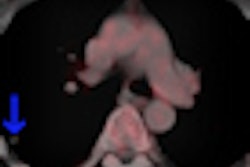
The largest telehealth study conducted in the U.K. suggests that participation in a telehealth monitoring program may reduce mortality and the need for emergency hospital care by patients with some chronic health conditions, according to an article published in BMJ online on 21 June.
Only 4.6% of the patients in the telehealth monitoring group died during a one-year period, compared with 8.3% in the control group. The number of hospital admissions was 5% lower (43% versus 48%), and the median length of stay in a hospital was almost a day less (4.87 days versus 5.68 days).
But the findings of the first in a series of five analyses of the Whole System Demonstrator project does not suggest that telehealth is a better or more cost-effective form of healthcare than face-to-face interaction with a healthcare practitioner. Rather, it instigates more questions than answers and makes a strong case to support more formal research and clinical trials.
The study set out to assess the impact of telehealth on hospital use by 3,230 patients over the course of a year. The patients, all of whom had chronic obstructive pulmonary disease, heart failure, or diabetes, were receiving treatment at one of 179 general practices located in Cornwall, Kent, and Newham. They were randomized to participate in a program in which they reported clinical readings up to five days each week using one of a variety of telehealth devices or were assigned to a control group receiving the usual care.
The study is part of a project funded by the Department of Health to test the benefits of integrated care supported by telehealth and telecare. Its primary objective was to assess the effect of home-based telehealth interventions on the use of hospital care, specifically an inpatient admission to a hospital while the trial was being conducted. Its secondary objectives were to evaluate emergency department visits, emergency and elective hospital admissions and length of stay, estimated treatment cost differences (to be analyzed in detail in a future article), and outpatient general practitioner visits. The mortality within each group was also compared.
The project was ambitious in scope. A total of 238 medical practices evaluated more than 15,000 patients. Only a third of these individuals were interested in learning more with a home visit, and ultimately 3,154 participated in the clinical trial.
A total of 1,570 were assigned to telehealth monitoring. Half of the total group had chronic obstructive pulmonary disease; the others were equally divided between having diabetes or heart failure, and many had more than one. Age composition was similar for both groups, with the majority being elderly. More than one-third were age 75 or older (35.6% for the telehealth group and 40.3%), and another third were seniors ages 65 to 74 (34.9% and 31.6% respectively). Sixty percent were male, and the overwhelming majority was Caucasian (72% and 74%).
One interesting discovery was that patients in the control group had higher levels of emergency hospital admissions during the first three months following enrollment in the study than the telehealth group. After this period of time, emergency hospital admissions were comparable. Principal investigator Dr. Stanton Newman, a professor and dean of the School of Health Sciences of City University London, and co-researchers suggested that either these patients might have become more aware of their health conditions because they were participating in a clinical trial, or during the evaluation process clinicians may have identified additional health problems that required hospital admission.
Otherwise, utilization of all healthcare services by both groups was comparable. A preliminary estimate of treatment costs indicated the telehealth group incurred an average of 188 pounds (less than 235 euros). This did not factor costs associated with telehealth monitoring.
Referencing much smaller studies, the research team suggested it will be important to study if particular types of patients benefit more from telehealth interventions, as well as what types of interventions produce the most positive, cost-effective outcomes.
In a related editorial, Dr. Josip Car, director of the Imperial College London's Global eHealth Unit and clinical senior lecturer at its School of Public Health, and co-authors concurred. They observed it's not realistic to say telehealth "works" or "doesn't work." It challenges "the complex interplay of technology, service designs, clinical input, and patient involvement."
It's been this way since the first telehealth programs were initiated in the late 1970s. More clinical studies are needed, the researchers concluded.


















